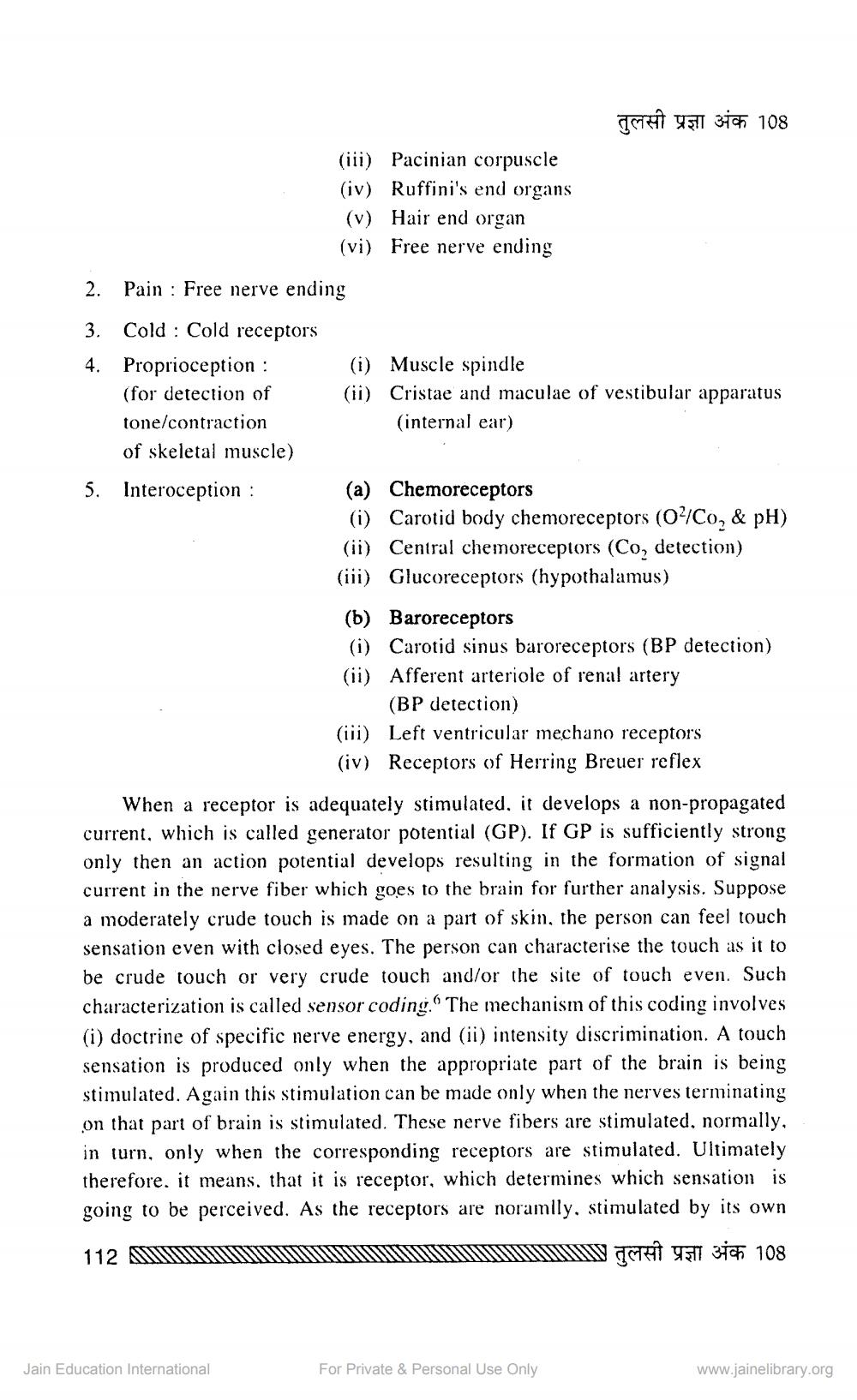________________
ne 4511 3ich 108
(iii) Pacinian corpuscle (iv) Ruffini's end organs (v) Hair end organ (vi) Free nerve ending
2. Pain : Free nerve ending 3. Cold : Cold receptors 4. Proprioception : (i) Muscle spindle
(for detection of (ii) Cristae and maculae of vestibular apparatus tone/contraction
(internal ear) of skeletal muscle)
5.
Interoception :
(a) Chemoreceptors (i) Carotid body chemoreceptors (04/Co, & pH) (ii) Central chemoreceptors (Co, detection) (iii) Glucoreceptors (hypothalamus) (b) Baroreceptors (i) Carotid sinus baroreceptors (BP detection) (ii) Afferent arteriole of renal artery
(BP detection) (iii) Left ventricular mechano receptors (iv) Receptors of Herring Breuer reflex
When a receptor is adequately stimulated, it develops a non-propagated current, which is called generator potential (GP). If GP is sufficiently strong only then an action potential develops resulting in the formation of signal current in the nerve fiber which goes to the brain for further analysis. Suppose a moderately crude touch is made on a part of skin, the person can feel touch sensation even with closed eyes. The person can characterise the touch as it to be crude touch or very crude touch and/or the site of touch even. Such characterization is called sensor coding. The mechanism of this coding involves (i) doctrine of specific nerve energy, and (ii) intensity discrimination. A touch sensation is produced only when the appropriate part of the brain is being stimulated. Again this stimulation can be made only when the nerves terminating on that part of brain is stimulated. These nerve fibers are stimulated, normally, in turn, only when the corresponding receptors are stimulated. Ultimately therefore, it means that it is receptor, which determines which sensation is going to be perceived. As the receptors are noramlly, stimulated by its own 112 AM
M M
TOT 3ich 108
Jain Education International
For Private & Personal Use Only
www.jainelibrary.org




